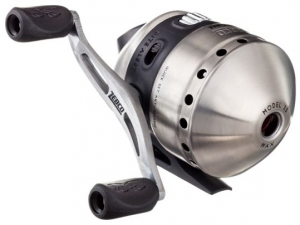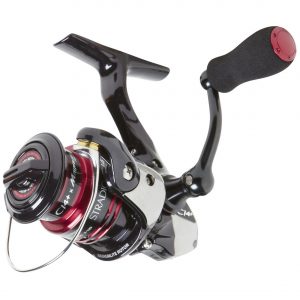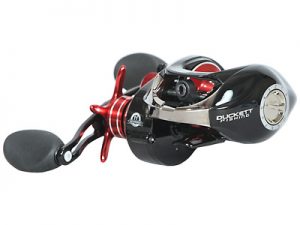Ron's Catch - Which Fishing Reel is Right for You?
By Ron Johnson, Professional Angler
Deciding on what fishing reel to use is just as important as selecting your fishing rod. In a recent blog, Ron discussed fishing rod types, length, and action to help you choose the right type for your style of fishing. Fishing Reels are also a critical component when pairing with your fishing rod, so we will discuss how to choose the best one for you.
Fishing reels exist in both left- or right-hand retrieve styles and are basic to advanced depending on your skill level. All fishing reels will vary in price, and much of that has to do with the components and style of reel you ultimately choose. Each reel style will have lower to higher grade components such as brakes, drag systems, gear ratio, bearings, and smoother casting. You will notice that the higher grade will usually lead to a higher cost.
You need to ask yourself which is best for your current level of fishing and how often you plan to fish. Investing in a more expensive reel in most cases is worth it in the long run if you fish more than a few times per year. I found that investing in a reel with better components results in less equipment failure and can hold up for years versus a less expensive model that becomes a “throw away” after a few fishing trips.
Gear ratio is also something to look for when picking a reel. Inside every reel is a main drive and series of gears. There are certain fishing techniques or presentations that require a higher or slower gear ratio to maximize the action of lures and speed of retrieve. In simpler terms, this means the higher the gear ratio, the more line is recovered for each full turn of the reel handle.
Example: 5:0:1 gear ratio versus 6:2:1 or 7:1 gear ratio. One full rotation of the reel will retrieve one full rotation of the spool. The higher the number means that for every one revolution or full turn of the reel, the more line is recovered.
Although you will find various brands and individual styles of reels in each category, below I will share the benefits of the three most common reels used today.

Spin Casting
- Made for beginner skill level
- Easy push button style for casting
- Most basic starter set up which is easy for kids or those with disabilities
- Can be used for casting live bait or lures
- Closed face/fixed upright position with cover protecting vital components
- Less Backlash
- Variety of line sizes can be used

Spinning
- This is for beginner to moderate level
- Reel sits below rod with an open face to the spool
- Typically used for finesse applications or light line
- Casting small lures or live bait much easier than other reels
- Shorter learning curve than the use of Baitcasting
- Cast much easier into the wind than other reels
- Drag systems much better than Spin Casting
- Typically, light line or smaller diameter lines work best
 Baitcasting
Baitcasting
- Advanced skill level and can be difficult when it comes to ease of use at first
- Fewer line twists
- Can backlash as the spool can travel faster than the line
- Very effective once you learn, but also harder to master
- Best for lures over a ¼ ounce and up in weight
- Lower profile reel sits on top of the rod, or upright position
- Line sizes from 10lb to 65lb
- Heavier fishing line for fighting fish in heavy cover, grass, or around docks
- High-quality components from Drag, Brakes, and variety of gear ratios
- More power allowing for an angler to have an advantage when fighting fish
- The line comes off reel directly in line with the rod for better casting and distance
- Versatility for flipping, casting, trolling and pitching
- Great for jigs, worms, frogs, topwater, spinnerbaits
We hope this information will provide you a better understanding of fishing reels and helps makes your next buying experience much easier.